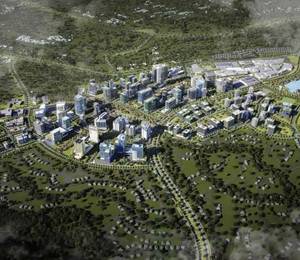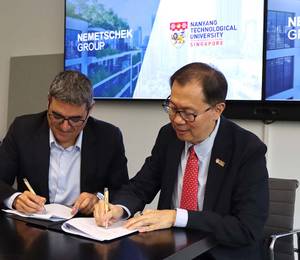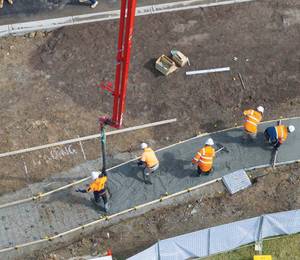One of Hong Kong’s largest developers, Sun Hung Kai Properties Limited (SHKP), has purchased nine units of electric construction equipment to replace their diesel counterparts. This major step towards decarbonisation aims to set an example for the construction industry, and also supports the Hong Kong government’s Climate Action Plan 2050, which envisions ‘Zero-carbon Emissions ‧ Liveable City ‧ Sustainable Development.’
“SHKP has committed substantial resources to reducing carbon emissions and promoting sustainable development. Electrification on construction sites is an important component of the group’s carbon-reduction strategy,” said Adam Kwok, executive director at SHKP. “Through the procurement of nine units of electric construction equipment, we strive to create a ‘triple-win’ scenario benefitting the environment, the industry, and our construction workers. Our collective efforts will contribute to making Hong Kong a greener, low-carbon city.”
According to Mr Kwok, this shift to electric power is estimated to lead to an annual reduction of approximately 240 t of carbon emissions, equivalent to planting over 10,000 trees. He hoped that the move would encourage other industry players to use more green building equipment. He also noted that the use of electric equipment eliminates diesel combustion, effectively reducing emissions and noise levels on construction sites, and would provide frontline workers with a cleaner and healthier work environment.
The nine electric machines acquired by SHKP consist of five truck cranes, two truck mixers and two trailer pumps, all manufactured by Sany Group. Some of the machines have been deployed on SHKP projects, including the mega project at Sai Sha near Ma On Shan, the Hong Kong Business Aviation Centre in-situ expansion, and the projects in Kwu Tung and So Kwun Wat.
SHKP is currently implementing its green initiatives across five major areas of construction:
1). Adopting green smart technologies
SHKP’s projects adopt green smart technologies from design and construction to facility management. These technologies include: modular integrated construction (MiC), multi-trade integrated mechanical, electrical & plumbing (MiMEP), design for manufacture and assembly (DfMA), Internet of Things (IoT), and building information modelling (BIM).
2). Developing green energy infrastructure
SHKP is building one of Hong Kong’s largest solar energy networks. Nearly 15,000 solar panels had been installed by the end of last year across various locations, totalling an area of approximately 400,000 sq ft. This extensive network is expected to result in an annual reduction of approximately 2,700 t of carbon emissions. In addition, the group has installed battery energy storage systems on construction sites to power electric machinery.
3). Research and innovation in green building technologies
Through collaboration with enterprises, universities and research institutions, SHKP aims to enhance the efficiency and scale of emissions reduction. The group has partnered with The Hong Kong Polytechnic University to conduct research in three areas: green applications, green building materials and green construction processes. The research on the injection of carbon dioxide into concrete is anticipated to yield results in 2025.
4). Supply of green building materials
SHKP’s subsidiary, Glorious Concrete, is providing the industry with low-carbon, ready-mixed concrete with CIC Green Product Certification. This includes four types of Platinum-grade ground granulated blast-furnace slag (GGBS) concrete.
5). Training green building talent
SHKP has established Sanfield Construction Innovations Limited, a company comprised of experienced engineers and professionals specialising in information technology and digital transformation. It takes a leading role in advocating for the adoption of environment-friendly and energy efficient technologies.
Looking ahead, SHKP said it will continue to invest in green construction and purchase more equipment that uses clean energy sources to help Hong Kong transform into a greener, low-carbon city.















